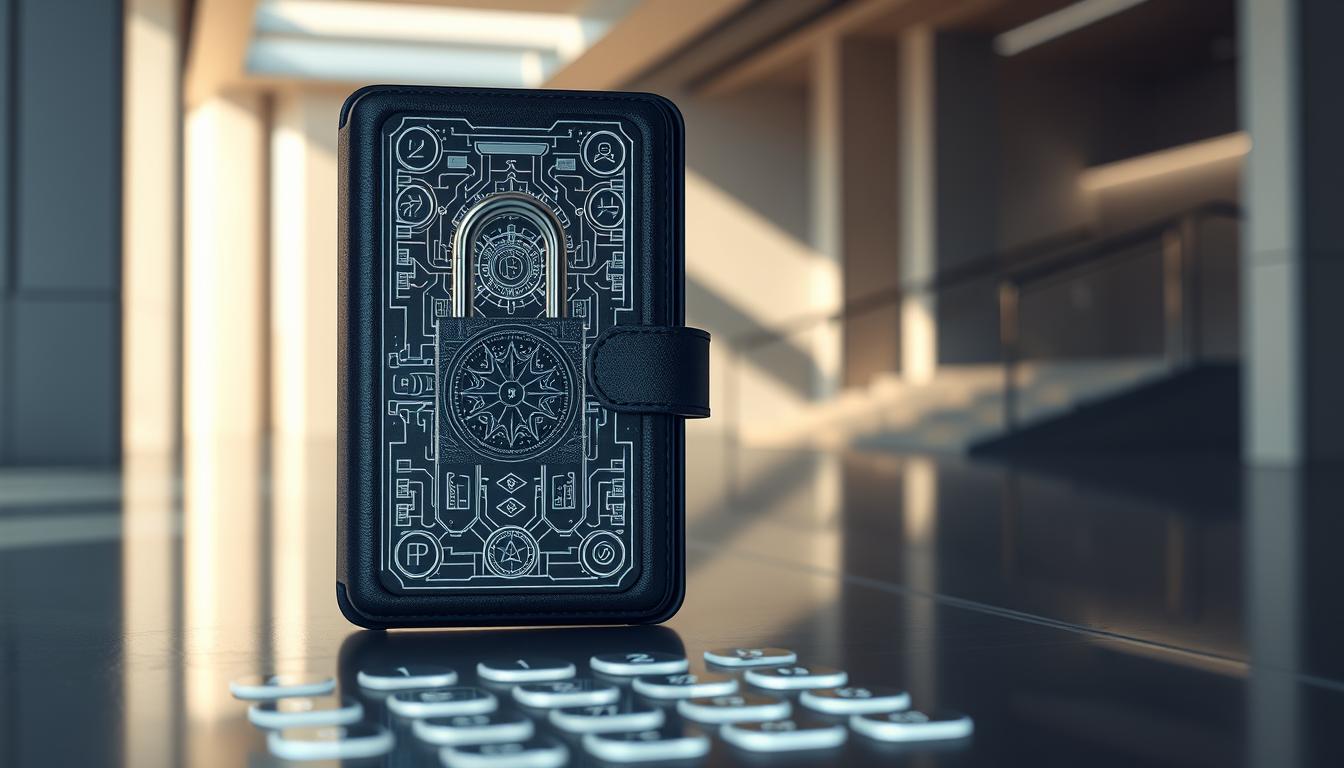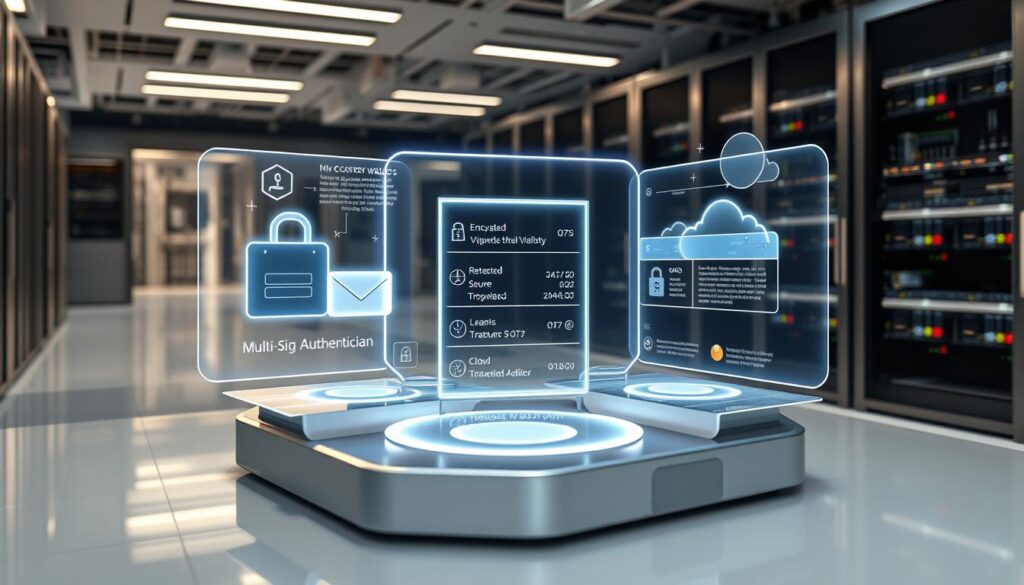Now Reading: Best Practices for NFT Wallet Custody Security Storage
- 01
Best Practices for NFT Wallet Custody Security Storage
Best Practices for NFT Wallet Custody Security Storage

In today’s digital landscape, protecting your valuable collectibles has become more important than ever. This comprehensive guide explores essential strategies for safeguarding your unique digital possessions in an increasingly complex blockchain environment.
Understanding the fundamentals of proper protection for non-fungible tokens is critical for anyone holding these distinctive digital items. Unlike traditional cryptocurrency holdings, these unique assets require specialised protection methods that demand careful consideration.
The guide addresses growing concerns surrounding digital asset protection, particularly as the market continues to expand and attract both individual collectors and institutional investors. Readers will discover how proper management practices can prevent catastrophic losses from unauthorised access.
This article serves as an essential resource for both beginners entering the space and experienced collectors looking to enhance their protection protocols. The buyer’s guide format ensures readers can make informed decisions when selecting solutions that align with their specific needs.
Key Takeaways
- Proper protection methods differ significantly from traditional cryptocurrency storage approaches
- The expanding market demands robust solutions for both individual and institutional holders
- Implementing correct practices prevents potential losses from hacking or theft
- This guide serves collectors at all experience levels with actionable insights
- Informed decision-making requires understanding various available options
- Current industry standards and emerging technologies continue to evolve
- Risk tolerance should guide your selection of protection measures
Introduction to NFT Wallet Custody Security Storage
Virtual property now represents significant financial value, requiring unprecedented protection measures. The digital revolution has transformed simple files into valuable financial instruments.
Overview of Digital Asset Security
Digital assets encompass anything stored virtually that holds value. These range from photos to sophisticated blockchain-based items. With blockchain technology, these assets have evolved into complex financial tools.
The growing market value of virtual property creates substantial risk. By design, these unique digital assets are irreplaceable. Recovery after unauthorised access becomes nearly impossible.
Protection for these holdings has evolved dramatically. Basic password systems have given way to multi-layered approaches. Today’s solutions involve cryptographic keys and specialised devices.
Holders face a fundamental challenge: balancing accessibility with robust safeguards. Legitimate transactions must remain possible while preventing unwanted access to valuable crypto collections.
The current threat landscape includes sophisticated hacking attempts and phishing schemes. Exchange vulnerabilities also pose significant risks. This makes comprehensive strategies essential for maintaining control of your digital property.
Understanding NFT Wallets and Their Importance
Distinct from conventional cryptocurrency holders, collectors of unique digital items require tailored interfaces. These specialised tools bridge the gap between simple value transfer and comprehensive digital collection management.
What Makes NFT Wallets Unique?
These specialised containers offer capabilities beyond basic cryptocurrency management. Unlike standard options that display numerical balances, they showcase visual representations of digital collectibles. This visual interface transforms the user experience significantly.
The integration with popular marketplaces represents another key advantage. Users can seamlessly connect to platforms like OpenSea for trading activities. This direct access simplifies the entire process from discovery to transaction.
Ownership verification stands as a critical function. Blockchain technology ensures each digital asset remains linked to its rightful owner. The system provides transparent proof of ownership that’s verifiable by anyone.
Collection management tools offer organisational benefits. Users can track metadata, view statistics, and organise their holdings efficiently. These features make the tools indispensable for serious collectors.
Compatibility across multiple blockchain networks enhances flexibility. Support for various standards ensures broad accessibility. This multi-chain approach future-proofs the investment in digital collections.
How Private Keys and Wallet Types Impact Security
The foundation of digital asset protection rests on understanding cryptographic key pairs and their relationship to different storage solutions. These authentication mechanisms determine who can access and transfer your valuable digital collections.
Two distinct cryptographic elements work together to manage digital possessions. Private keys function like master passwords—randomly generated numbers known only to the owner. Public keys serve as public addresses that receive transactions.
When these keys pair correctly, blockchain transactions execute smoothly. This relationship forms the backbone of ownership verification. The system ensures only authorised individuals can move assets.
Different solutions handle these essential elements in varying ways. Some keep private keys completely offline on specialised devices. Others store them on internet-connected applications for convenience.
Your choice of solution dramatically affects vulnerability to threats. Compromised private keys mean irreversible loss of associated assets. Blockchain’s decentralised nature offers no recovery options.
Understanding this relationship helps collectors make informed decisions. The right balance between accessibility and protection depends on individual needs. Proper key management remains the most critical security consideration.
Differentiating Hot Wallets from Cold Wallets
Understanding the distinction between online and offline digital asset containers is fundamental to developing a sound protection strategy. The primary difference lies in their connection to the internet, which directly impacts both convenience and safety levels.
Hot wallets remain constantly connected to the internet for immediate access. These software applications facilitate frequent trading activities and quick transactions. Their always-online nature makes them vulnerable to cyber threats.
Advantages and Disadvantages of Each Type
Hot wallets connected to the internet offer significant benefits for active users. They provide zero-cost installation and seamless integration with trading platforms. The user-friendly interfaces make them accessible even for beginners.
However, this convenience comes with increased risk exposure. Wallets connected internet face constant threat vectors that offline solutions avoid entirely.
Cold storage solutions operate completely offline using physical hardware devices. They provide superior protection by isolating private keys from online threats. The initial investment ranges from £60 to £300 depending on features.
The setup process requires more technical understanding than hot alternatives. Transactions involving cold wallets may take 24-48 hours to complete when moving assets online.
Suitable Use Cases for Hot and Cold Wallets
Hot wallets excel for day-to-day trading activities and spontaneous marketplace opportunities. They’re ideal for participating in digital drops and testing new smart contracts. Active collectors benefit from their immediate accessibility.
Cold wallets serve as secure vaults for long-term holdings and high-value collections. They’re recommended for assets you don’t need regular access to. Many experienced users employ both types in a hybrid approach.
This strategy balances security with practical accessibility. It keeps valuable assets safe while maintaining liquidity for trading activities.
Hardware Wallets and Enhanced Security Measures
For serious collectors of blockchain-based items, dedicated physical equipment offers the highest level of assurance available. These specialised tools create an impenetrable barrier between digital assets and potential online threats.
The physical nature of these solutions provides tangible protection that software cannot match. Users gain complete control over their cryptographic keys through dedicated hardware.
Benefits of Using Ledger and Other Devices
Leading brands like Ledger provide compatibility with over 50 different software interfaces. This flexibility allows collectors to maintain their preferred workflow while enjoying enhanced protection.
The Secure Element chips in modern hardware wallets represent cutting-edge technology. These specialised components isolate sensitive operations from potential computer vulnerabilities.
| Feature | Hardware Solution | Software Alternative | Advantage |
|---|---|---|---|
| Key Storage | Offline in secure chip | Online on device | Immune to remote attacks |
| Transaction Verification | Physical button press | Screen confirmation | Prevents malware approval |
| Recovery Options | Seed phrase backup | Account recovery | User-controlled restoration |
| Smart Contract Interaction | Device verification required | Automatic approval possible | Reduces risk exposure |
User Experiences and Trusted Testimonials
Many users report significant peace of mind after adopting hardware solutions. One collector shared, “Ledger makes cold storage downright easy. My digital assets land infinitely safer.”
Another user described their experience: “I got hacked and lost thousands worth of collectibles. Since switching to hardware protection, I’ve been sleeping properly again.”
Sophisticated collectors often employ multiple devices for different purposes. This strategy separates daily activities from long-term storage needs effectively.
The tangible nature of these solutions inspires confidence. Some users even personalise their equipment with meaningful names, reflecting their role as guardians of valuable digital collections.
Optimising Custody Solutions for Digital Asset Management
Asset managers face a critical decision when safeguarding digital collections: whether to maintain direct oversight or delegate protection to specialised firms. This choice fundamentally shapes risk exposure and operational workflow.

Four primary models exist for managing these valuable holdings. Each offers a distinct balance of autonomy, convenience, and professional oversight.
Choosing Between Self-Custody and Third-Party Custodians
Self-management provides complete control over your assets. This approach eliminates reliance on external services and potential platform risks. It suits technically proficient users who prioritise sovereignty.
However, this independence means bearing full responsibility for implementation. There is no safety net for human error or technical failure.
| Provider Type | Key Advantage | Primary Consideration |
|---|---|---|
| Self-Custody | Maximum control & privacy | Full technical responsibility |
| Exchange Platforms | Integrated trading access | Trust in platform solvency |
| Financial Institutions | Regulatory safeguards | Traditional banking protocols |
| Specialised Custodians | Purpose-built solutions | Focus on digital assets only |
Third-party services offer professional infrastructure and insurance. These options reduce daily management burdens. They are ideal for those preferring expert oversight.
Evaluate your technical comfort, asset value, and risk tolerance. The right choice depends on your specific management objectives.
The Role of NFT Wallet Custody Security Storage in Digital Asset Safety
Digital ownership records on distributed ledgers provide transparency, but the real protection lies in how access keys are managed. The unique nature of these digital items makes them irreplaceable once compromised.
Unlike traditional possessions, blockchain-based collectibles cannot be recovered after unauthorised access. This permanence elevates the importance of proper management practices. Organisations must balance accessibility with robust safeguards.
The distributed ledger system creates immutable records of existence and transfers. However, this blockchain-level protection becomes meaningless if key management fails. Unauthorised parties can transfer assets when they gain access to cryptographic keys.
Effective solutions create varying access levels for different users. They maintain flexibility while preventing unwanted transactions. Understanding storage solutions forms the foundation of digital asset safety.
Transaction signing and marketplace connectivity represent additional vulnerability points. Each interaction requires secure management protocols. The right approach serves as the last line of defence against permanent loss.
Securing Digital Assets with Best Practices
Mastering cryptographic key protection represents the most critical aspect of safeguarding digital collections. These authentication mechanisms serve as the ultimate gatekeepers to your valuable holdings.

Proper management of these essential elements prevents unauthorised transactions and permanent loss. Organisations must implement comprehensive protocols that balance accessibility with robust protection.
Effective Management of Private Keys
Your private keys function as the sole proof of ownership for blockchain-based items. These cryptographic credentials must remain absolutely confidential at all times. Even brief exposure can lead to immediate asset theft.
Best practices include never storing keys in plain text on internet-connected devices. Avoid cloud services and digital communication channels for sharing these sensitive elements. Hardware solutions provide optimal isolation from online threats.
Multi-factor authentication adds essential layers for account access. This requires physical devices or biometric verification alongside passwords. Such measures significantly reduce vulnerability to remote attacks.
Strong password practices remain fundamental despite advanced security measures. Use unique, complex combinations stored in encrypted managers. Regular reviews of access controls ensure ongoing protection.
Effective control extends to backup planning with secure recovery phrase storage. This comprehensive approach to digital asset management protects your valuable assets long-term.
Integration with Leading Devices and Wallet Brands
Modern digital asset management relies heavily on seamless integration between hardware and software components. This connectivity allows collectors to maintain robust protection while accessing diverse platforms and services.
Leading hardware solutions like Ledger demonstrate remarkable versatility by securing over 50 different software applications. A single physical device can protect multiple digital interfaces while keeping authentication elements completely offline.
Connecting Ledger Devices with Multiple Wallets
The Ledger Live application serves as a centralised management hub for this ecosystem. Users can track their entire portfolio and access various decentralised applications through one interface.
This setup maintains the superior protection of cold storage while providing convenient access to trading platforms. Transaction signing always occurs on the hardware device, preventing exposure to online threats.
| Integration Type | Number of Supported Wallets | Key Benefit | Transaction Security |
|---|---|---|---|
| Ledger Hardware | 50+ software wallets | Unified portfolio management | Offline signing maintained |
| Other Hardware Brands | Varies by manufacturer | Brand-specific ecosystems | Device-dependent protocols |
| Software-Only Solutions | Limited cross-compatibility | Immediate accessibility | Online vulnerability |
Exploring Compatibility with Third-Party Services
Hardware devices now integrate directly with major exchanges and decentralised finance platforms. This allows users to buy, swap, and stake assets without compromising protection measures.
These connections enable full participation in the digital ecosystem while maintaining cold storage advantages. Compatibility extends across multiple blockchain networks including Ethereum and Solana.
Proper setup ensures smooth operation between devices, software interfaces, and external platforms. This comprehensive approach maximises both functionality and asset safeguarding.
Compliance and Regulatory Considerations
Navigating the legal landscape has become essential for anyone involved with digital collectibles. Governments worldwide are implementing frameworks that directly impact how people manage their holdings in the crypto space.

Know Your Customer (KYC) procedures are now standard for most exchanges and custodial services. These rules require users to provide identification before accessing certain features. The goal is to identify bad actors and ensure legal operation.
The regulatory environment varies greatly by country. Some nations embrace innovation with clear rules. Others impose restrictions that limit access to platforms and specific digital assets.
For users, understanding these requirements helps in choosing solutions. Some prefer the privacy of non-custodial options that bypass KYC. Others value the legal protections and insurance offered by regulated services.
Tax implications are another critical area. Many jurisdictions treat sales of digital items as taxable events. Proper record-keeping of costs and sale prices is vital for accurate reporting.
Regulated custodians must follow strict oversight, including regular audits. They implement anti-money laundering (AML) procedures to prevent illicit use of their platforms. This comprehensive approach provides peace of mind for asset holders.
Customising NFT Wallets for Specific Needs
Custom configuration of digital holding solutions provides the flexibility needed to accommodate diverse user scenarios from casual collecting to professional trading. Rather than adopting generic approaches, experienced users design personalised systems that reflect their individual risk profiles and collection values.
Personalisation and Security Options for Diverse Users
Collectors implement sophisticated multi-device strategies for different purposes. One user shared their approach: “I use multiple Ledgers. Different colours = different uses. Public wallet for social interactions, never touching long-term storage.” This colour-coded system creates clear separation between daily activities and valuable holdings.
Another collector explained their three-device setup: “Hot wallet for minting and drawings, main wallet for most NFTs, and a vault wallet for cold storage of crypto.” This approach balances accessibility with robust protection based on asset liquidity requirements.
Family planning represents another customisation scenario. A parent noted: “I have 5 Ledgers total—my personal NFT bag, one for testing, and one for each of my 3 daughters.” This demonstrates how digital inheritance considerations influence wallet architecture decisions.
These personalised systems allow users to adjust protection levels according to specific needs. High-value items receive maximum safeguards while frequently traded assets remain accessible. The right configuration places each asset type in its proper place within a comprehensive protection strategy.
Leveraging Technology to Prevent Cyber Threats
Modern protection strategies increasingly rely on sophisticated technological barriers to deter cyber criminals. These advanced systems create multiple defence layers that work together seamlessly.

Advanced encryption forms the foundation of secure digital asset management. Military-grade algorithms protect sensitive information during all transactions and communications.
Advanced Encryption and Multi-Factor Authentication
Multi-factor authentication requires multiple verification forms before granting access. This typically combines passwords, physical devices, and biometric data.
Secure Element chips provide bank-level protection for cryptographic keys. These dedicated processors isolate sensitive operations from potential threats.
| Security Feature | Protection Level | Implementation Complexity | Ideal Use Case |
|---|---|---|---|
| Basic Encryption | Standard | Low | Low-value holdings |
| Multi-Factor Authentication | Enhanced | Medium | Daily trading activities |
| Secure Element Chip | High | High | Long-term storage |
| Multi-Signature Technology | Maximum | Very High | Institutional holdings |
Multi-signature technology distributes authority across multiple keys. This approach ensures no single point of failure can compromise transactions.
Regular security audits and updates address emerging vulnerabilities. Reputable manufacturers provide ongoing improvements to protect against new threats.
These technologies create defence-in-depth architectures where breaching one layer leaves additional barriers intact. Proper configuration balances protection with practical access needs for different crypto activities.
User Guidance for Setting Up NFT and Crypto Wallets
Getting started with digital collectibles requires mastering the initial setup process for your chosen storage solution. This practical guide walks beginners through each essential step while highlighting common pitfalls to avoid.
Step-by-Step Instructions for Beginners
Begin by selecting the right type of container for your needs. Hot options offer quick 5-10 minute setup, while cold alternatives provide superior protection but require 1-2 hours for configuration.
Follow this straightforward process:
- Download applications only from official sources
- Create strong, unique passwords immediately
- Securely record your recovery phrase offline
- Perform a test transaction with minimal value
- Verify everything works before transferring significant assets
Understanding fees is critical for new users. Always perform dummy transactions to calculate gas costs beforehand. This ensures your container contains sufficient crypto to complete purchases without failures.
Managing KYC and Account Set-Up Procedures
Know Your Customer verification requires specific documentation. Prepare government-issued ID, proof of address, and sometimes an in-wallet selfie.
Approval times vary from minutes to several days depending on the exchange. Provide accurate personal information including:
- Full legal name and date of birth
- Current residential address
- Active phone number and email
This comprehensive approach helps beginners confidently navigate the entire process from selection to successfully storing their digital items.
Conclusion
Effective protection of unique digital items hinges on understanding the relationship between different safeguarding solutions and individual needs. The right approach balances convenience with robust measures that match your specific situation.
No single solution works for all people. Active traders benefit from accessible options, while long-term holders need maximum protection for valuable assets. Your choice depends on how you interact with your collection.
Your private key represents the ultimate authority over your digital assets. These cryptographic keys must remain secure at all times. Compromise means immediate, irreversible loss.
Implementing the best practices outlined provides the security needed for confident participation. Start with fundamental measures before advancing to sophisticated strategies. This way ensures your valuable holdings remain protected in their proper place.
FAQ
What is the most secure way to store my digital collectibles?
The most secure method is using a hardware device, often called cold storage. These physical gadgets keep your private keys completely offline, making them immune to online threats. Brands like Ledger offer robust solutions for safeguarding your assets.
How do I maintain control over my assets when using an exchange?
When your items are held on a trading platform, the exchange controls the private keys. For true ownership, consider transferring your holdings to a self-custody solution where you alone manage access. This gives you full authority over your transactions.
Are mobile and desktop applications safe for holding valuable items?
These are forms of hot wallets, which are connected to the internet and convenient for frequent trading. However, they present a higher risk than offline options. It is wise to only keep a small amount in them for active use and store the bulk of your collection in a more secure place.
What happens if I lose my private key?
Losing your private key typically means permanent loss of access to your digital possessions. Unlike a bank account, there is usually no recovery service. This is why securely backing up your seed phrase in multiple physical locations is absolutely critical.
Can I connect my Ledger device to different wallet interfaces?
Yes, many Ledger devices can be integrated with various third-party software interfaces. This allows you to view and manage your assets through different applications while your keys remain protected on the hardware, combining ease of use with strong safety measures.
What are the typical fees involved in moving my assets to a personal wallet?
Transferring your items usually incurs a network fee, or “gas fee,” paid to the blockchain to process the transaction. These costs vary depending on network congestion and are separate from any trading fees charged by an exchange.













